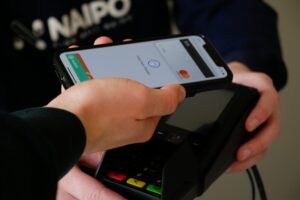Small Businesses: Reap the Benefits of Cashless Transactions

“Mobile devices, high-speed data communication, and online commerce are creating expectations that convenient, secure, real-time payment and banking capabilities should be available whenever and wherever they are needed” (Chair of the Federal Reserve of the United States, Jerome Powell)
South Africa is already a cash-heavy economy as it is and this reliance on cash is financially and socially costly for the economy. This cost alone is estimated at approximately R88 billion per year. This number is calculated by the Payments Association of South Africa (PASA) and is derived from consolidating the costs to consumers, businesses, banks and the SARB and is made up of both direct financial and indirect social costs. “The direct financial costs primarily relate to transactional fees incurred by end-users, the costs of printing cash, the supply of cash, and the maintenance of the expensive cash infrastructure (ATM’s, branches and cash centres). The social indirect costs relate to unnoticed factors like time wastage, investment opportunity lost, inflation, crime and others”, according to the Association.
“Fintech” solutions such as tap-to-pay, interbank instant deposits, eWallet, PayPal, Snapscan, Zapper continue to grow in popularity, primarily because of considerations around minimising exposure to Covid-19 and social distancing. 61% of respondents interviewed during the survey cited social distancing as a driver for digital commerce.
General Manager at Business Partners Limited, Jeremy Lang says “In this new ‘less-cash’ society, the worst thing that any SME can say to a customer is, ‘I don’t accept that method of payment.’ This means that South African businesses are under significant pressure to adapt and evolve their mentality towards digitisation. It is a change for the better, for a number of reasons and we urge all SMEs to get onboard and use digitisation as a way of establishing a competitive advantage going forward.”
Cashless transactions come with the following benefits:
- Increased safety
Cash exposes the user to higher risk due to the physical exposure to a third party. There is a high risk in holding cash, where users are at risk of theft and leakage. In the current Covid-19 environment, the less contact with cash the better due to safety reasons.
- Cashless is more convenient
Another major appeal in cashless commerce is the convenience of having your “money” in a central depositary that you have access to at any location and time, without having to physically count it.
- SMEs can keep better records of their transactions
A paper trail of every digital transaction lives in a cloud – and can therefore be accessed by either the account holder or the financial service provider should there be a need to reference the transaction in future.
- “Cash Is Expensive for South Africa”
This is according to the Payments Association of South Africa. In its “Modernised Real-time Electronic Retail Payments: A Case for Change for South Africa” report, there is a Cost of Cash to Businesses section, which states that “when assessing the cost of accepting payments for businesses, cash is largely perceived as cheaper than card-based payments (POS and QR codes).”
“However, businesses often do not account for all the costs associated with accepting cash payments (e.g. the risk of theft, leakages, infrastructure costs for safes, tellers etc.) over and above the costs associated with depositing this cash. On average, for smaller businesses, cash deposit fees are about 1.5% including the fixed base costs, which is significantly lower than the average merchant service fees (MSF) for accepting card payments. However, if we include the indirect costs of cash acceptance utilising the same proportion of indirect costs for the cost of cash to consumers, then the true cost of cash for businesses increases to approximately 3.4% for small businesses,” it clarifies.
Take professional advice on the best and safest ways to take advantage of the cashless transactions trend.

